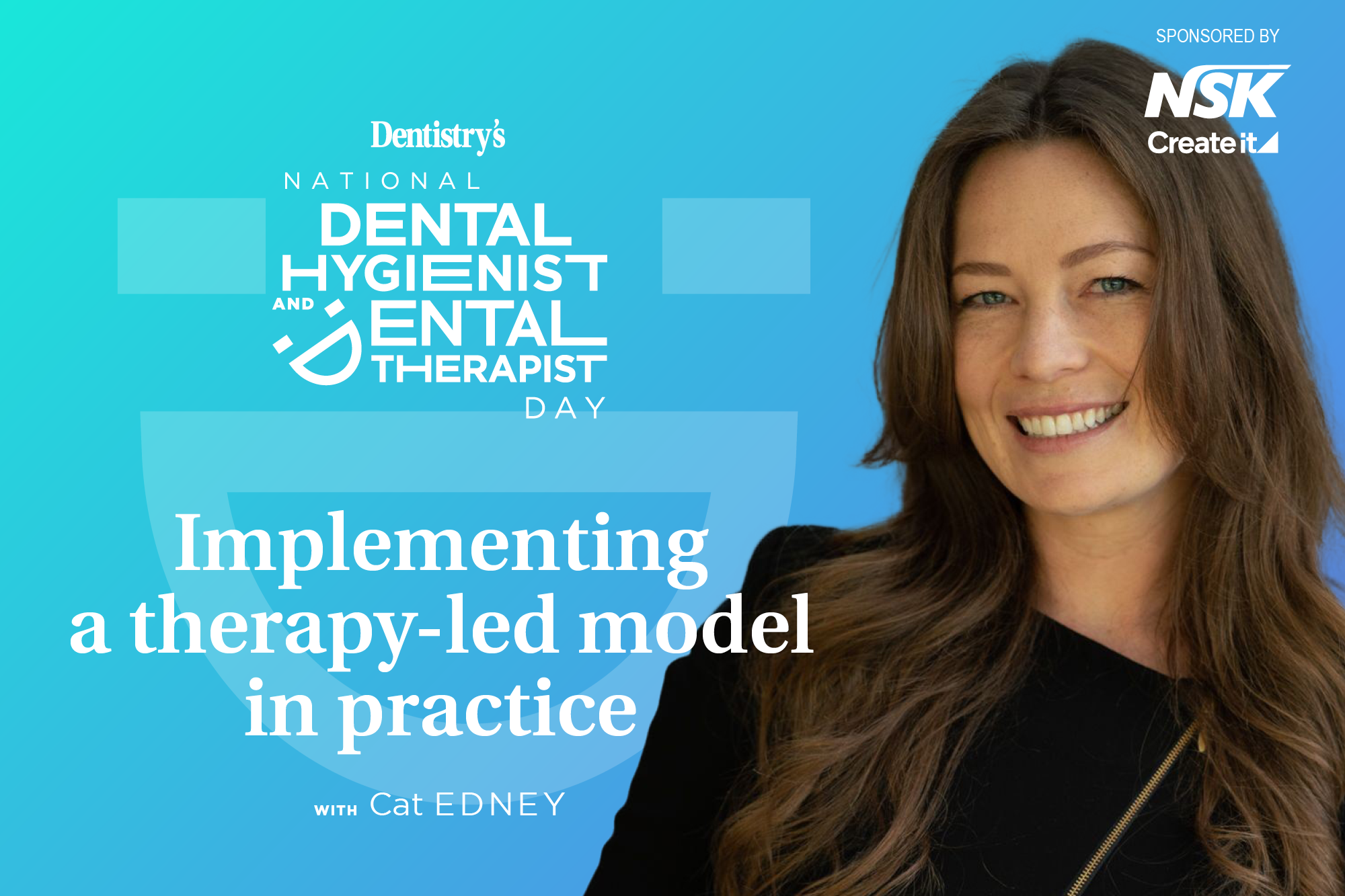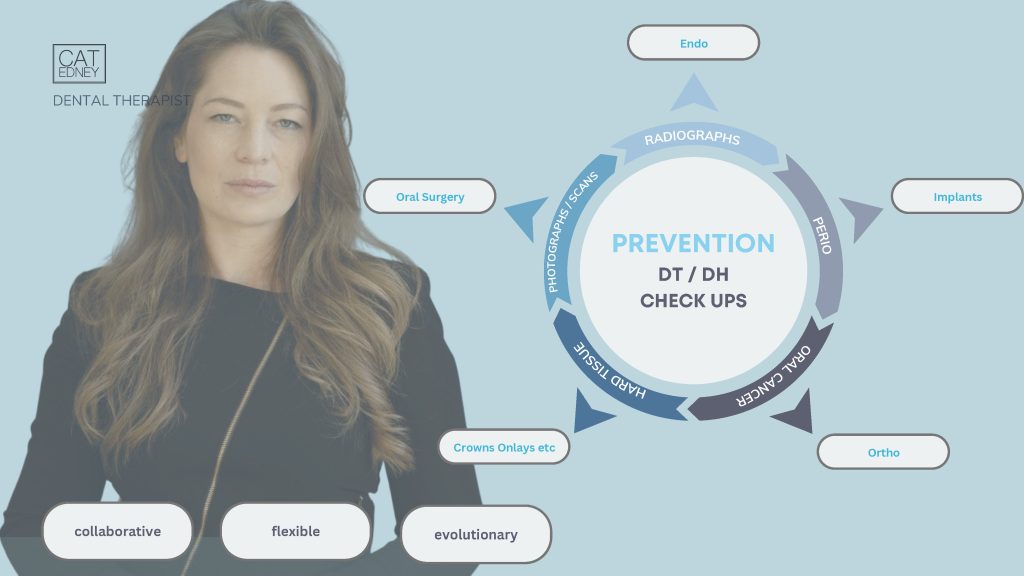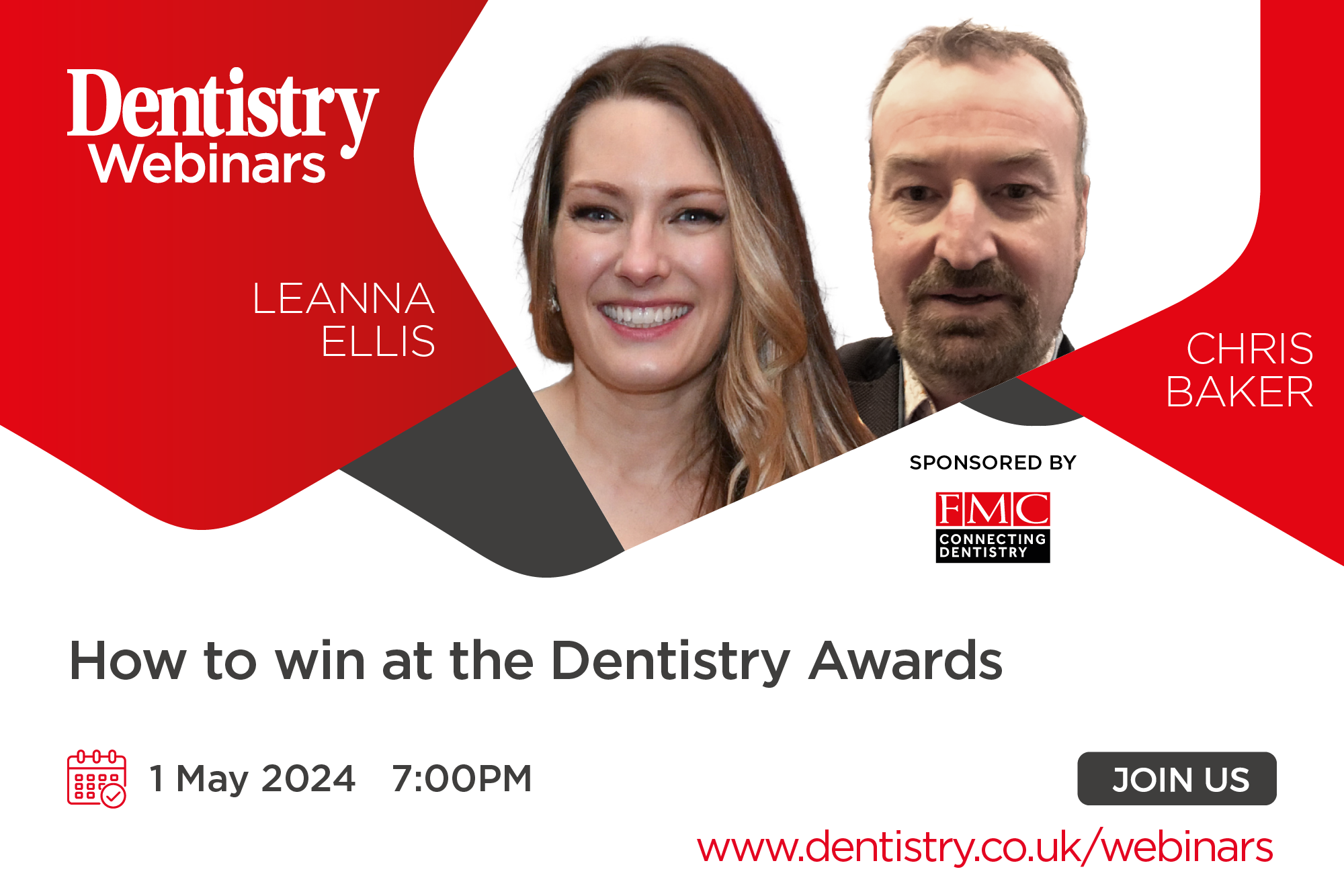
Cat Edney explains what a therapy-led model looks like, how to implement it and the many benefits it will bring your practice.
My memories of dentistry before I worked in the industry are of the standard 1980s style dentist. It was a lovely man, using the bottom floor of his house as a dental surgery. He had one nurse who was also his receptionist. Instruments were hung up along the wall, the X-rays were little, tiny films stuck to a light under the wall cabinet and they had a fish tank in the waiting room – the highlight of my visits.
This dentist did it all – from paediatrics to surgical extractions, the hygiene and the dentures. If you needed it, it happened in that one room with that one dentist and his one nurse. That one dentist was playing every instrument in his solo – a one-man band.
Dentistry is delighted to announce National Dental Hygienist and Dental Therapist Day – a brand new national day dedicated to celebrating the invaluable contributions of dental hygienists and dental therapists.
In association with the British Association of Dental Therapy (BADT), the British Society of Dental Hygiene and Therapy (BSDHT) and the Irish Dental Hygienist’s Association (IDHA), this new national day will take place on 1 May. This is to commemorate the day direct access came into force for dental hygienists and dental therapists on 1 May 2013.
Why does a therapy-led model work?
In contrast, modern dental surgeries have multiple rooms, multiple chairs and multiple support staff. There are often practice managers, social media managers, treatment coordinators, head dental nurse, decontamination nurse, hygienists and GDP associates.
However, these GDPs are still working to the ‘one man band’ model. They have their own list of patients, often their own room they work in and we all know a GDP who likes to have their own dental nurse… the one-man band model works – it has worked for years. So why change?
What I have noticed by working in multiple teams like this is that every individual clinician has their strengths. There is usually a direction they want to take their own personal development or a passion they have in dentistry, be it oral surgery, orthodontics, endodontics or even smile makeover work.

The therapy-led model supports these GDPs to play to their strengths. It turns a dental surgery from multiple rooms of one man bands into a well-tuned and cohesive orchestra, with the dental therapist as a conductor. It’s a familiar set up where our medical colleagues have led the way, following their passions by choosing a profession within medicine so that now it seems ridiculous to expect your GP to also be your surgeon and your physiotherapist.
Therapist-led models work financially for practices because it ensures that those that have the ability to perform high profit treatments are not spending valuable chair time on the low profit check-ups and direct restorative work. Instead dentists’ diaries can be full of pre-qualified patients wanting the treatments they are best at providing.
The therapist does the check ups
Traditionally dentists have referred to dental hygienists and dental therapists. This can put pressure on the dentist to know what the individual they are referring to is confident to undertake while also possibly walking a fine line of keeping their own diary busy – but not too busy – with low profit treatments.
When we implement a therapist-led model with a multi dentist team we flip this concern. The therapist does the check ups.
The therapist is able to treatment plan and undertake the treatment they are confident with and then refer the out of scope treatment to the right clinician for the patient’s needs. They can refer to multiple GDPs if need be.
The therapist is able to triage patients to ensure that when they have a missing tooth and are interested in replacing it, they get in with the implant dentist who is passionate, knowledgeable and confident in discussing all things implants.
As a result, this fills each dentist’s diary with treatments they enjoy and are passionate about. This reduces the time the dentist spends on check ups – which can easily take up half of their diary time.
How does a team make the therapy-led model work?
The move to a therapy led model can throw up some concerns and questions along the way and understandably the team may need guidance and support when navigating the transition.
How this model works in your own practice will often vary from team to team and also depending on the team members you have at the time. This is why developing protocols within the team has always been my focus when supporting dental practices through their structure changes.
Key areas that we explore include the patient journey, the booking process, the referral criteria for each clinician and also detailed swim-lane protocols to ensure clinicians are confident that there is a level of standardisation between them all. This takes some time and a number of conversations, and it also depends on a level of understanding between clinicians and support staff.
In short, it works by taking a ‘team’ from being a group of people who work in the same building on different projects to a cohesive well-oiled machine that jointly looks after every patient under its care.
To learn more about implementing dental therapy in practice, visit my column ‘Dental therapy explained’ or visit www.the-modern-therapist.co.uk.



